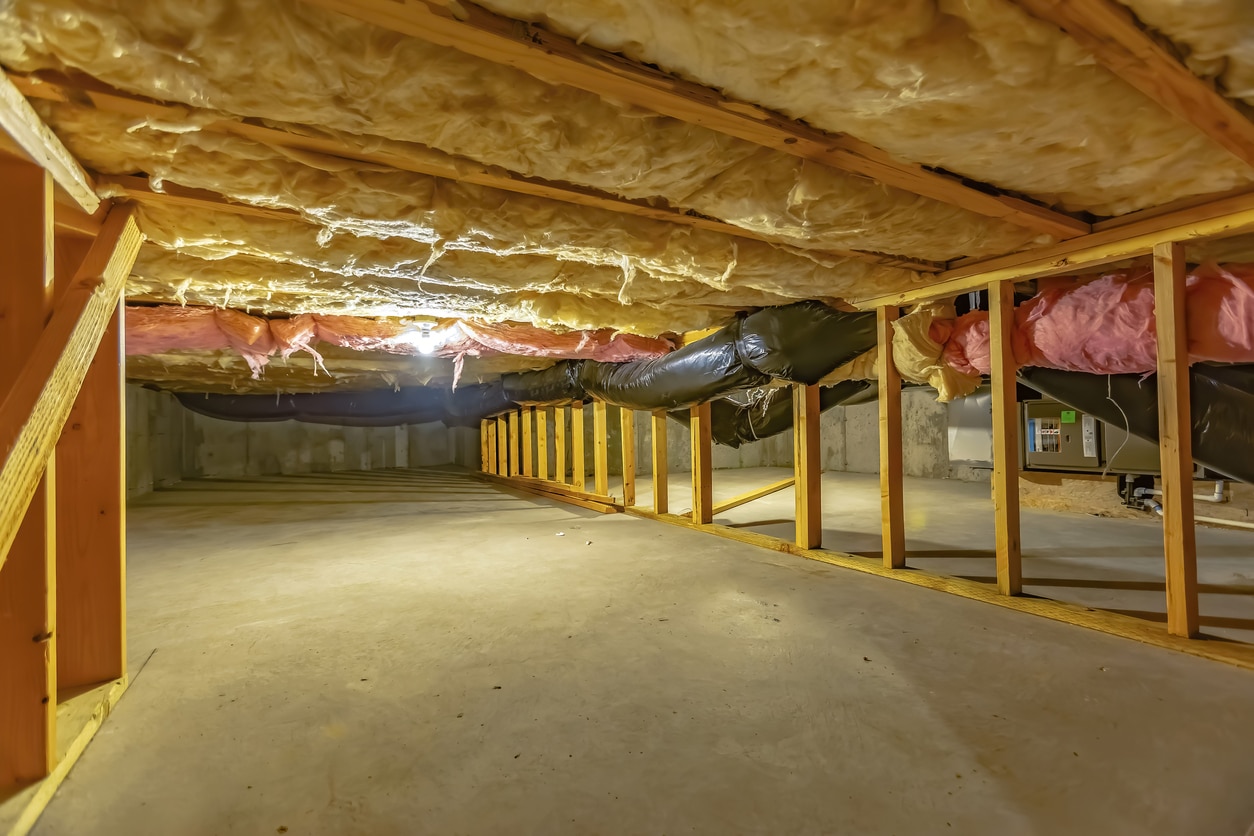
Prevent Damage to Your Flooring: Tips for Homeowners with Crawl Spaces in North Texas
If you have a crawl space beneath your home, protecting your flooring from damage should be a top priority. Crawl spaces may be the source of moisture damage resulting from the dense clay soil that exists under many North Texas homes, which often has poor drainage. As moisture accumulates in the soil under the crawl space, it can make its way into homes and cause damage to fixtures, including your flooring.
Fortunately, there are several preventative measures you can take to safeguard your investment.
Signs That Your Crawl Space Is Causing Flooring Issues
Moisture problems in crawl spaces can affect all types of flooring, regardless of the material. You may identify potential issues by looking for the following visual cues:
- Mold on the flooring itself or on the walls and baseboards
- Warping and other defects in wood floor boards
- Dullness and bubbling in vinyl flooring
Keep in mind that these effects can be caused by something other than crawl space moisture. For example, high humidity levels inside the home can contribute to mold growth and flooring damage. The problem may also result from a hidden plumbing leak.
The best way to determine whether crawl space moisture is playing a role is to schedule a comprehensive inspection. The presence of warped and rotted wood, rusted utility components, or damaged insulation all point to a moisture problem.
How to Safeguard Your Flooring From Moisture Damage
1. Install a Vapor Barrier
One of the most effective ways to prevent moisture buildup in your crawl space is by installing a vapor barrier. This barrier helps keep moisture from the ground from seeping into your home’s structure. Align Foundation Repair offers vapor barrier installation using StegoCrawl, a system designed for long-term performance. This protective measure is essential to maintaining a dry and healthy environment under your floors.
2. Full Crawl Space Encapsulation
For comprehensive protection, consider full crawl space encapsulation. This process involves sealing the entire crawl space with a high-quality vapor barrier, and may include additional systems such as a sump pump and a dehumidifier. This method not only prevents moisture buildup but also enhances your home’s comfort and efficiency. To learn more about this service, check out our crawl space encapsulation in Dallas Fort Worth.
3. Install a Sump Pump
Moisture can accumulate in your crawl space due to various factors, including rain and groundwater. Installing a crawl space sump pump can help manage and remove excess water, preventing it from causing damage to your floors. A properly installed sump pump directs water away from your home, keeping your crawl space dry.
4. Use a Dehumidifier
A dehumidifier can significantly reduce the humidity levels in your crawl space, preventing moisture-related issues such as mold and mildew. Crawl space dehumidifier installation is an excellent addition to your encapsulation system, helping keep your crawl space dry and your floors protected from moisture damage.
5. Upgrade Insulation
Flooring components called joists, which are horizontal beams that provide structural support to flooring, are often insulated. Upgrading existing insulation to closed-cell foam increases the protection of floor joists, as it’s a reliable vapor barrier due to the density of the material.
6. Regular Inspections and Maintenance
Regularly inspect your crawl space for signs of moisture, mold, or damage. Routine maintenance can help identify and address issues before they become significant problems. Look for any signs of water intrusion, such as damp or musty smells, and confirm that your vapor barrier and other systems are functioning correctly.
7. Seal Gaps and Cracks
Sealing any gaps or cracks in your crawl space can help prevent moisture from entering. Make sure that vents, access doors, and any other openings are properly sealed. This step can significantly reduce the amount of moisture that enters your crawl space, protecting your flooring from damage.
8. Proper Drainage
Ensure that the ground around your home slopes away from the foundation to promote proper drainage. Poor drainage can lead to water pooling around your foundation and entering your crawl space. Installing and maintaining gutters and downspouts can also help manage rainwater effectively.
9. Improve Air Circulation
Improving air circulation in your crawl space can help reduce moisture buildup. Proper ventilation allows for better air movement, which can help keep your crawl space dry. However, it’s important to balance this with measures to keep out humid outdoor air, especially in the summer months.
Implementing these tips can help protect your flooring from the damaging effects of moisture and create a healthier living environment. For professional assistance with any of these measures, including vapor barrier installation and full crawl space encapsulation, contact crawl space encapsulation experts at Align Foundation Repair. We’re here to help you safeguard your home and enhance its value.

